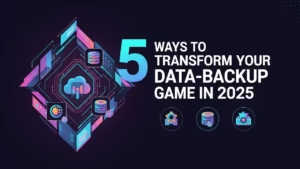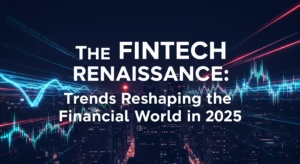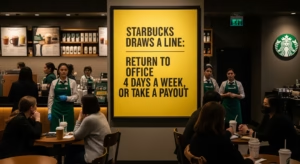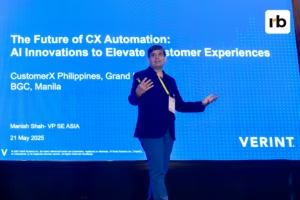“Anything that touches people is marketing” — Digital marketing is a dynamic and innovative method that allows businesses to effectively promote their products or services to consumers by means of the use of digital channels and internet platforms. Businesses may easily connect with their targeted clients by embracing the huge potential of digital technology. Through digital marketing, businesses can tap into the vast online ecosystem and exploit its immense reach and accessibility.
The art of digital marketing comprises a wide range of approaches and strategies that parallel traditional marketing methods. It entails using a variety of digital technologies, like websites, social media platforms, search engines, email marketing, and others, to reach and engage the right audience.
It acts as a catalyst for companies to stay ahead in the ever-changing digital landscape nowadays.
Meanwhile, Denise Gamo-Halaguena, the Head of Digital Acceleration at McDonald’s Philippines engaged in a captivating discussion, reflecting on her remarkable 11-year journey in the ever-evolving realm of digital marketing. She eloquently highlighted the transformative shifts that have shaped the industry over the years, underscoring pivotal milestones that have revolutionized the way brands connect with their audiences.
Her journey commenced in 2009, a time when Customer Relationship Management, Community Management, and User-Generated Content (UGC) emerged as key pillars of digital marketing. As the landscape continued to evolve, she delved into the intricacies of SEO vs SEM, gaining insights into the nuances of Digital Marketing, Reach, Relevance, Response, and ROI, all of which became vital components of her strategic repertoire by 2013.
In 2017, armed with an unwavering commitment to stay at the forefront of digital innovation, she embraced the concept of Attentive Reach/Viewability, delving into the intricacies of Intent to Action and Attribution. These concepts not only broadened her understanding but also empowered her to drive impactful digital campaigns that delivered tangible results.
Undeterred by the rapid pace of change, she forged ahead into 2018, where she embraced the transformative power of personalization and explored the intricacies of crafting remarkable Digital Ecosystems. Deeply focused on enhancing the Customer Experience, she further honed her skills in Digital Marketing Maturity, propelling her organization to new heights of success.
Throughout her awe-inspiring journey, she exemplified a relentless pursuit of excellence, embracing the ever-evolving nature of digital marketing. Her insights and experiences served as a beacon of inspiration for both seasoned professionals and aspiring marketers, illuminating the path to success in an era defined by technological innovation and customer-centric strategies.
We have different channels that can serve our customers’ needs, such as drive-thru and takeout. Since we have sophistication in our company, we can identify where the customers come from and where their orders are placed. This allows us to focus our attention on specific behaviors based on the channels. We can determine which products sell more by examining our internal data and observing what people intend to buy. Additionally, we can analyze what people purchase or add to their checkout bags. It is important to balance our internal data with external data and consider which ecosystem partners to engage with in order to enhance the customer experience.” said by Denise Gamo-Halaguena, the Head of Digital Acceleration at McDonald’s Philippines, on how McDonald identifies the trend and intent.
Digital Marketing as Vital Bridge that Holds what Matters to Business and Customers
1. Measurements / Analytics
Digital marketing metrics, both qualitative and quantitative, play a pivotal role in the arsenal of marketers as they assess the effectiveness of diverse marketing endeavors within the campaign industry. Simultaneously, these metrics serve as a means to monitor customer behavior and translate it into actionable data with tangible outcomes.
2. Intent
By understanding consumer intent and leveraging the power of digital platforms, marketers can craft compelling narratives and engaging experiences that resonate with potential customers. Digital marketers employ a multitude of tools and tactics to transform intent into visibility. Moreover, digital marketers analyze consumer behavior and leverage data-driven insights to tailor marketing campaigns for maximum impact.
3. Reciprocation
Customer retention lies at the core of a brand’s success, and it is intricately connected to two vital pillars: Customer Relationship Management (CRM) and Personalized Experiences. Building enduring relationships with customers begins with a brand’s ability to provide value and elicit reciprocal actions, such as repeated purchases and unwavering loyalty. To achieve this, marketers must delve into the art of fostering a two-way relationship with their customers, analyzing their needs, preferences, and desires.
4. Agile Response
In the dynamic landscape of marketing, it is crucial for marketers to cultivate an agile mindset and a proactive approach in response to changes and evolving situations. The ability to swiftly adapt and respond is essential to maintaining a brand’s relevance and staying on the cutting edge for customers. Effective marketing should not be reactive, waiting for drastic circumstances to unfold. Instead, it demands a continuous pursuit of agility and a multifaceted strategy to fortify the brand’s strength.





















